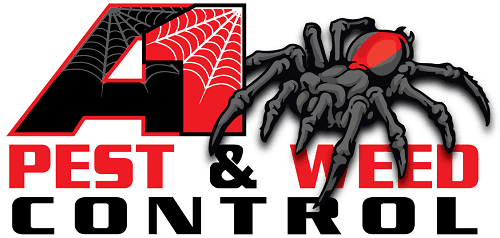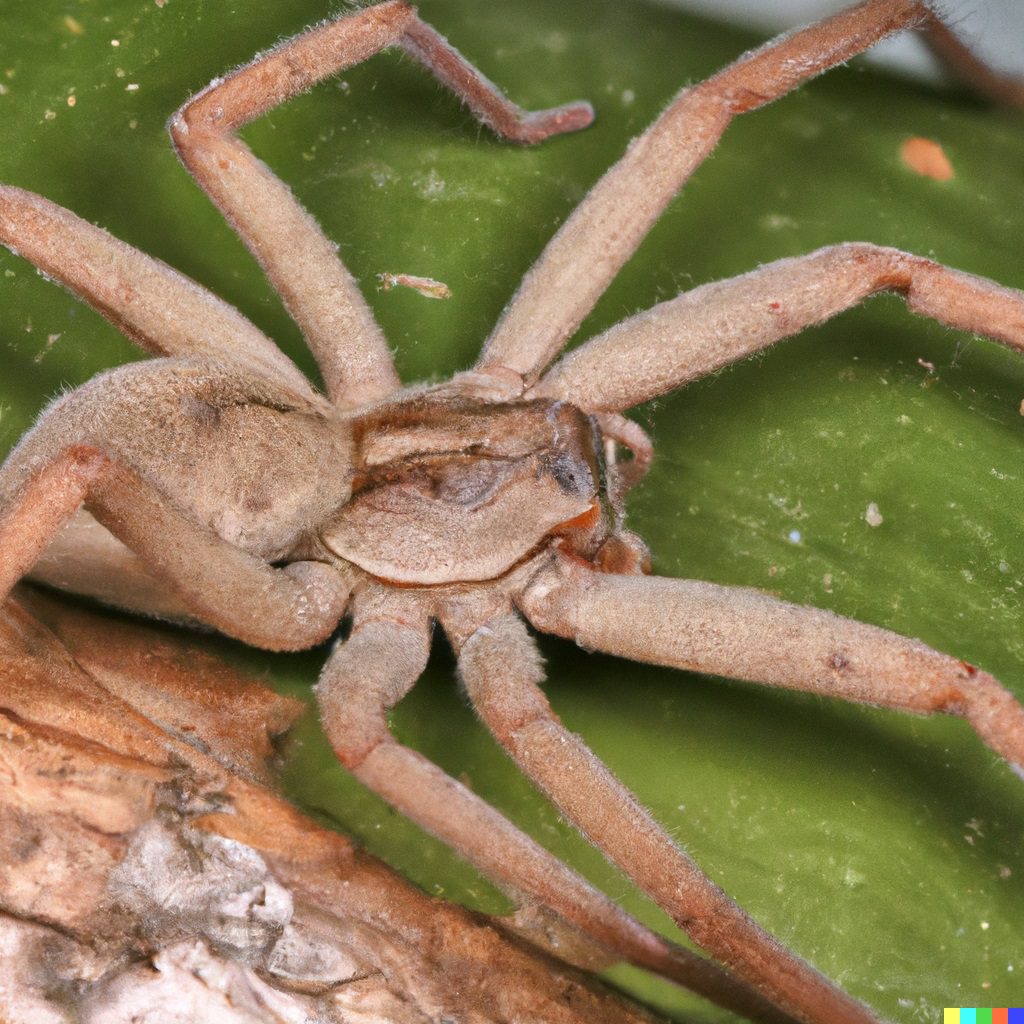Arachnid Alert: Get to Know Australia’s Spider Species
Australia is a country renowned for its unique and abundant wildlife, including many species of spiders. From the common house spider to the feared funnel-web spider, these arachnids have an array of fascinating characteristics that make them both intriguing and sometimes dangerous. This article will explore some of Australia’s most notorious spiders and examine their potential dangers in order to gain a better understanding of how to interact with them safely.
It can be difficult for those unfamiliar with Australian spiders to tell which are deadly or harmless. It is important to become aware of certain features in order to differentiate between potentially hazardous species and those that pose no danger at all. In this article, entomologists will discuss various aspects of morphology as well as behaviour that may help distinguish between venomous and nonvenomous varieties found in the region.
In addition, this article shall also consider methods used by experts to identify particular species so that even inexperienced individuals can learn how to protect themselves from any possible harm while still appreciating the beauty of Australia’s eight-legged inhabitants. With knowledge of which species are safe and which should be avoided, readers can rest assured that they will remain safe when encountering Australian spiders in their natural environment.
Overview Of Australian Spiders
Australia is home to a plethora of spiders, with approximately two thousand species. These species are diverse and can be found in various habitats ranging from coastal environments to arid regions. Spider identification is made easier by the fact that many spiders display distinctive physical characteristics such as colouration, size, shape and behaviour. Spiders also vary in their venomous capabilities: some are harmless, while others possess powerful neurotoxins that can result in serious medical complications if bitten.
The rich diversity of Australian spider species has been documented through extensive research conducted by leading entomologists and arachnologists around the world. For example, there have been numerous discoveries of new genera or potential subspecies within existing genera, with further studies still being conducted on a regular basis. This ongoing work helps illustrate the incredible range of spider varieties across Australia’s landscapes – from rainforest-dwelling web-weavers to small desert hunters – making it an invaluable resource for anyone interested in learning more about these creatures.
It is important to remember that not all spiders present any threat to humans; however, understanding how to identify potentially dangerous species and what action should be taken upon contact is essential knowledge when exploring Australia’s fascinating spider fauna.
Huntsman Spider In Australia
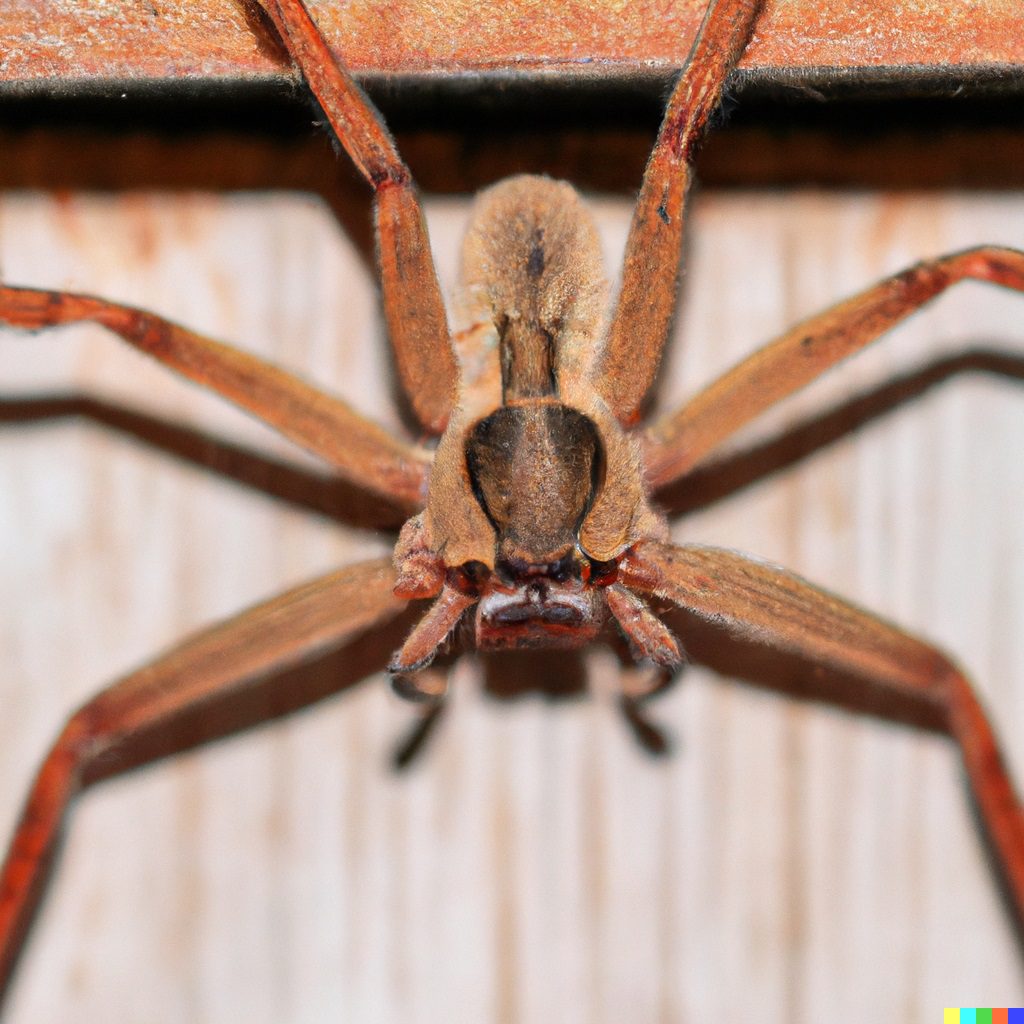
When discussing Australian spiders, the Huntsman Spider is one of the species that often comes to mind. These spiders have a wide distribution across Australia and are known for their large size and long legs. Though they may appear intimidating at first glance, many of these spiders are generally harmless and prefer to avoid human contact. Despite this, it is important to note that some huntsman spider species in Australia can be venomous and cause harm if they bite humans or animals.
The typical habitat of a Huntsman Spider includes wooded areas such as trees, rocks, walls of buildings and other structures. They tend to stay near dark places during the day so they can hunt more effectively at night when most prey are available. When threatened, these spiders will usually run away instead of attacking like other arachnid species. However, there are still some cases where bites occur due to accidental disturbances or entanglements with clothing or skin.
In terms of their physical appearance, Huntsman Spiders typically measure anywhere between 1-5 inches (2-12 cm) in length and vary in colour from light browns to greys depending on the species. In addition to their impressive leg span, which ranges from 4-6 inches (10-15 cm), these spiders also possess powerful fangs that allow them to inject venom into their victims when provoked or attacked by predators. This makes them an important part of maintaining balance within the natural food chain in Australia’s ecosystems.
Read More About The Australian Huntsman Spider
Black House Spider In Australia
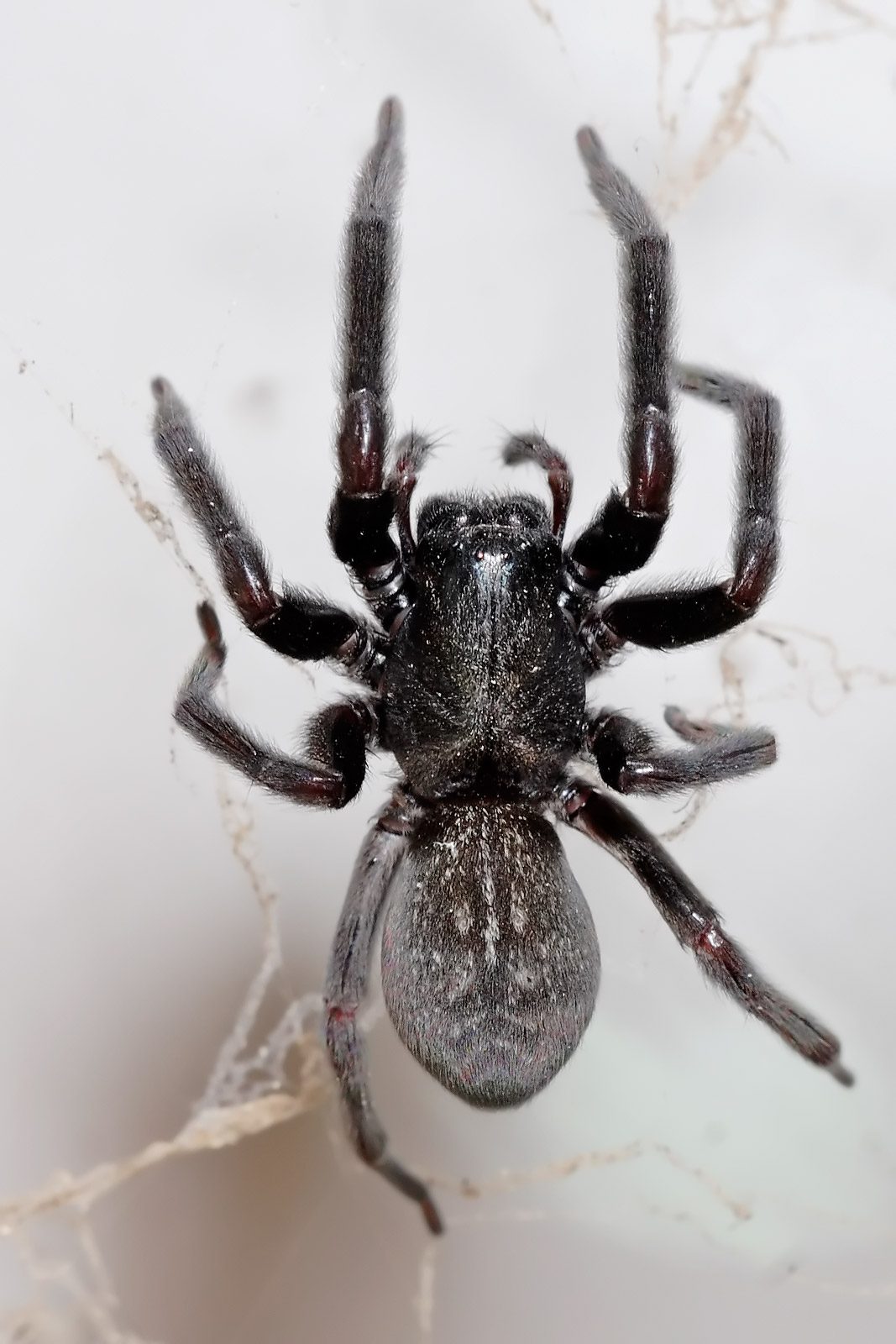
- A long body with black or dark brown colouring
- A characteristic pattern on its abdomen
- Eight legs which are usually reddish-brown in colour
- An adult size ranging from 8mm to 12mm
- Large webbing near areas they inhabit
Though this species may appear menacing due to their large webs, they generally leave humans alone unless provoked. If bitten by a Black House Spider, symptoms typically include mild pain at the site of the bite for up to 24 hours, followed by local redness and swelling. However, these effects tend to diminish after 48 hours without requiring medical attention. As such, it is safe to say that though potentially intimidating in appearance, the Black House Spider poses little threat to humans if left undisturbed.
Read More About The Australian Black House Spider
White Tail Spider In Australia

The White Tail Spider (Lampona cylindrata) is a species of spider found in Australia. It has an elongated dark body and is often confused with the Black House Spider due to its similar colouration. This spider can be identified by its white markings on the end of its abdomen, hence its name. Like many spiders that are native to Australia, this species is venomous; however, it does not pose any serious threat to humans as its bites rarely cause major symptoms or reactions.
When identifying White Tail Spiders, one should take note of their size; they typically measure up to 18mm in length and have eight legs, like most other arachnids. Furthermore, these spiders generally prefer moist environments such as under logs or rocks near bodies of water but may sometimes venture into human dwellings if there is ample food available.
They feed primarily on insects such as cockroaches and flies, making them beneficial for controlling pest populations. While White Tailed Spiders will bite if provoked, they rarely inflict severe pain or consequences upon humans compared to other venomous Australian species, such as the Funnel Web Spider or Redback Spider, whose bites require urgent medical attention.
With proper identification tips and knowledge about their typical habitats and feeding habits, one can easily observe these fascinating creatures without worrying too much about the potential harm caused by a bite – although caution should always be taken when dealing with potentially dangerous wildlife!
Read More About The Australian White Tail Spider
Redback Spider In Australia
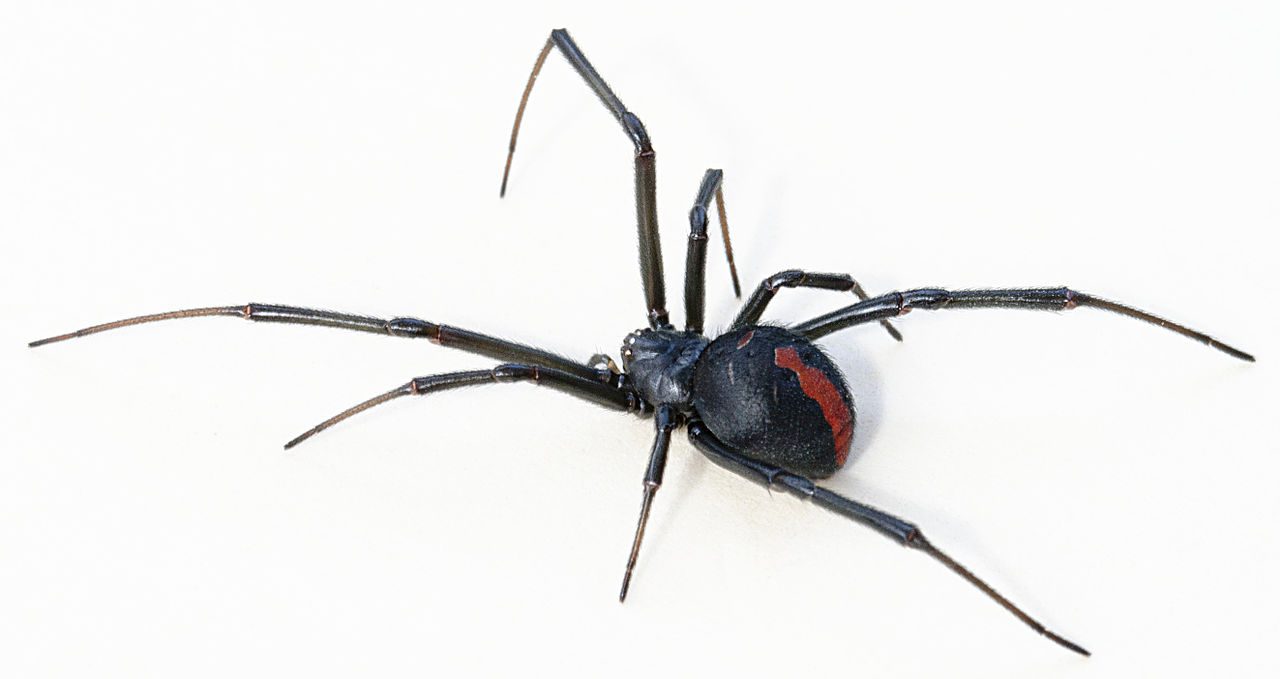
The Redback Spider, Latrodectus hasselti, is a species of spider found in Australia. Its appearance is characterized by an hourglass-shaped marking on the abdomen and a red stripe along its back. It belongs to Theridiidae, which includes some of the most venomous spiders known. Although this species is native to Australia, it can also be found in other parts of the world.
Redback Spiders are considered dangerous due to their venomous bites that can cause severe pain and muscle spasms. In rare cases, they may even cause death if not treated quickly with antivenom. Despite how dangerous they appear, these spiders are usually harmless unless provoked or disturbed directly. This means they will only attack when threatened or surprised inside clothing or bedding items left unattended near their areas.
Here are five key facts about Redback Spiders:
- They inhabit urban areas throughout all states in Australia except for Tasmania;
- Males are much smaller than females at around 3mm compared to 8–10 mm;
- Females have a black body with bright orange/red markings on their upper side;
- Their webs tend to have messy, irregular shapes rather than organized spiral patterns like many other spider species;
- Generally observed during summer months but can occur year-round depending upon climate conditions.
Although highly feared among Australians, Redback Spiders offer valuable lessons about resilience and adaptation, given their ability to survive in harsh climates with limited resources available. For those wanting more information about Australian spider species, plenty of educational material is available online designed to facilitate a greater understanding of such creatures through knowledge and appreciation.
Read More About The Australian Red Back Spider
Identification Tips For Beginners
Identifying spiders can be a difficult task, particularly for beginners. It is important to first familiarize oneself with the types of Australian spiders that exist in order to identify them accurately. There are over 2000 species of spider found across Australia, and each type has its own unique characteristics which must be considered when attempting identification. Here are some tips on correctly identifying different types of Australian spiders to assist those just beginning their journey into arachnology.
The most basic way to determine the type of spider one looks at is by size and colour. The Redback Spider, for example, is easily identified due to its black body and red stripe pattern along the abdomen. Other common features used for identification include web type – orb weavers create circular webs, whereas funnel-web spiders construct sheet-like webs – as well as leg length and shape. It may also be useful to consider where the spider was spotted; certain species prefer specific habitats, such as woodlands or grasslands, which helps narrow down potential candidates.
In addition to physical appearance, it is worth doing research online or consulting field guides in order to gain further insight into spider behaviour and other characteristics which aid in accurate identification. By combining knowledge gained from both observation and study, one should be able to confidently identify various species of Australian spiders based on size, colouration, web type, habitat preferences and more.
The Most Dangerous Spiders To Humans
Australia is home to a variety of spider species, some of which are venomous and potentially dangerous to humans. It is important to understand the dangers posed by certain spiders in order to remain safe from any unpleasant encounters.
In identifying harmful spiders, it is necessary to be aware of their physical features and behaviours that can help with identification. For instance, Redback Spiders have a distinct red stripe on their back, while Sydney Funnel-Web Spiders have glossy black fangs that protrude outwards. If a person suspects an encounter with a venomous spider, they should not attempt to catch or handle them as this could result in being bitten and envenomated. In cases where bites do occur, medical attention should be sought immediately if there is pain or swelling at the site of the bite.
Spider safety measures involve preventative actions such as wearing protective clothing when outdoors and avoiding disturbances in areas where insects may inhabit. Furthermore, regular inspections around homes for spider webs can help reduce risks associated with potential bites. Identification guides are also available online that provide detailed information about Australian spider species along with tips on how to safely remove them without harm.
Human Interaction With Spiders
Humans have had a long history of interaction with spiders. There are many myths about spider bites, and the effects of such encounters vary from person to person depending on their individual sensitivity to the venom or other substances in a bite. Spider control is an important consideration for humans living in close proximity to some species of spiders that can be dangerous if not handled safely.
Spider safety should always be taken into account when dealing with any spider; protective gear such as gloves, closed-toe shoes, and insect repellents may reduce the risk of contact. It is also wise to be aware of potential danger zones where spiders might hide or breed.
Commonly known habitats include woodpiles, gardens, dark corners in basements and attics, and under furniture outdoors. Additionally, certain types of spiders prefer areas near water sources like rivers or lakes. Knowledgeable individuals will keep this information in mind when considering outdoor activities in these kinds of environments.
People have employed the use of chemical controls over time, but it should only be done after careful assessment due to its impact on wildlife populations and other environmental factors. In addition, several natural methods are available for controlling spider populations, including removing webs manually or using vacuums specially designed for capturing them without causing harm. These solutions provide greater peace of mind than more invasive strategies and help maintain healthy ecosystems around human dwellings.
Frequently Asked Questions
What Other Spiders Are Native To Australia?
Australia is home to a wide range of spiders, including several native species. The most well-known Australian spiders include the funnel web, redback, and huntsman. Each of these species has its own distinctive traits that set them apart from other arachnid groups. Additionally, Australia also hosts the daddy longlegs, an often misunderstood species.
Due to its venomous bite, the funnel web spider is one of Australia’s most feared spiders. These large black or brown-coloured spiders have thick spines on their legs and can be found in various parts of Eastern Australia, such as New South Wales and Queensland.
Redback spiders are easily recognisable by their bright red stripe along their back, which they use as a warning sign against predators. In addition to this distinct feature, they also possess bulb-shaped abdomens and small bodies with thin legs that make them appear almost lanky when compared to other spider breeds.
Huntsman spiders are another common sight throughout Australia; these medium-sized creatures are typically grey or brown in colour and tend to live in cracks around windowsills and walls both inside and outside homes. Lastly, Daddy Longlegs (also known as Harvestmen) exist across all regions of the country but, unlike other spiders, do not spin webs nor produce venom, making them harmless to humans despite their intimidating size and appearance.
It is clear that there exists a diverse range of spiders within Australia’s borders, each possessing unique characteristics which make identification relatively easy for experienced entomologists and amateur arachnophiles alike. From the highly venomous Funnel Web Spider to the harmless Daddy Longlegs, it’s important to remember no single species should be judged without first understanding its behaviour and role within our native ecosystems.
How Do Spiders Protect Themselves From Predators?
Spiders employ a variety of defence strategies to protect themselves from predators. These include predator avoidance, camouflage strategies, venom production, and web building. Predator avoidance is the most common method used by spiders as they attempt to remain undetected by potential threats. Many species will hide in dense vegetation or inside bark on trees when faced with danger. They also have evolved body shapes that mimic their surrounding environment for added protection from predators.
Camouflage strategies are another way some spider species defend themselves against predation. They can change colour depending on their surroundings so as not to be recognized easily by potential threats.
Additionally, many spiders create intricate patterns along their bodies which helps them blend in with their current environment and discourages any would-be attackers. Venom production is also an effective strategy employed by certain species of spiders. Through specialized glands near the base of their mandibles, these arachnids produce toxins that deter predators looking for prey items.
Finally, webs provide both nutrition and protection for spiders; they use silk threads spun out of their spinnerets to capture food sources while simultaneously creating protective barriers against larger animals seeking shelter within close proximity to them. Web building also provides additional visual cues warning possible assailants away from spider territory, thus allowing the inhabitants more security than if they were living alone without such defences in place.
Are There Any Spiders That Are Beneficial To Humans?
The current H2 question is whether there are any spiders that are beneficial to humans. From an arachnologist or entomologist perspective, it can be said that a number of species of spiders in Australia may provide some benefit to humans. While the majority of spider species in Australia are harmless, a few have been identified as having potential benefits for humans.
For example, research has shown that spiders can help control populations of pests such as mosquitoes and other insects, which cause damage to crops and spread disease. The Australian redback spider (Latrodectus hasselti) is one species whose venom has been used in laboratory studies to develop drugs with therapeutic effects on pain relief. In addition, certain types of web-building spiders have also been found to act as natural insect traps by capturing large numbers of flying insects that could otherwise become a nuisance if not controlled. Furthermore, some species of trapdoor spiders living in burrows underneath the ground act as important parts of native ecosystems by providing shelter for smaller animals like lizards and frogs.
In summary, while most Australian spider species pose no risk to people and should generally be left alone, there are select species that can offer various advantages to human life due to their unique characteristics and behaviours. As such, further study into these potentially beneficial aspects is warranted so our understanding of their broader role in nature can grow.
How Do I Safely Remove A Spider From My Home?
When it comes to spider removal from a home, several important steps should be followed in order to ensure the safety of all involved. In this article, we shall discuss safe methods for removing spiders and capturing them without causing harm or unnecessary stress.
Spider removal starts with the proper identification of the species present in your home. It is necessary to know which type of spider you are dealing with before attempting any form of handling or capturing. Knowing whether the particular variety is venomous can also allow for more informed decision-making when deciding how best to proceed with its removal.
Once the spider has been identified, there are several methods available for safely removing it from one’s home:
Spider Capture: This involves using tools such as gloves, tongs, jars and plastic containers to gently grab hold of the spider while avoiding contact with skin. Proper precautions such as wearing protective clothing should be taken when performing this method since some arachnids may have potent defensive mechanisms such as biting or spraying chemical irritants at their would-be captors.
Spider Handling: Arachnologists recommend taking caution when handling spiders as they can become easily stressed during capture. Careful consideration must also be given regarding where and how long the captured specimen will remain contained prior to release into an outdoor environment away from human dwellings.
In addition to these two primary strategies, professional pest control services can assist homeowners overwhelmed by their spider problem by providing effective solutions tailored to individual needs and circumstances. The experts possess extensive knowledge about various types of spiders and provide safe treatments that will help rid homes of unwanted pests quickly and efficiently.
How Can I Prevent Spiders From Entering My Home?
Preventing spiders from entering a home can effectively reduce the risk of spider bites and other hazards. This paper will discuss how insect repellent, pest control services, window screens, and door seals are important prevention methods for homeowners.
Insect repellents work by masking scents that attract insects like spiders into homes. Pest control services use chemical treatments that kill or repel spiders and discourage them from entering living spaces. Window screens also act as barriers to keep out pests such as spiders. Door seals should be checked regularly for gaps through which spiders may enter through.
By utilizing these preventive measures, it is possible to significantly decrease the chances of having unwanted guests like spiders in one’s home. Homeowners should take action now—early intervention may help avoid costly repairs due to damage caused by some species of Australian spiders. Taking steps to prevent the entry of these eight-legged creatures should result in more peaceful nights at home with fewer worries about the potential risks they pose.
Conclusion
Australia is home to a wide variety of spiders, many of which are harmless and beneficial to humans. While some species can be dangerous, most do not pose any threat to human health or well-being. Spiders play an important role in the environment by helping keep insect populations under control. Many spiders use camouflage as protection from predators, while others use venom for defence against prey.
Spiders also provide a number of benefits for humans; they help reduce pests that cause crop damage, and their webs act as natural air filters that assist with air quality regulation. In addition, spider silk has been studied for its potential medical applications, such as wound healing agents and artificial ligaments. Therefore, it is important to understand the ecology of these creatures before making assumptions about them.
For those who encounter spiders inside homes, there are several ways to safely remove them without causing harm. To prevent future infestations, use screens and caulking materials from sealing off entry points around windows and doors. Taking steps like cleaning up debris piles on your property will also help decrease spider activity in your area. Understanding our arachnid neighbours can give us insight into how we can coexist peacefully and benefit from their presence simultaneously.
